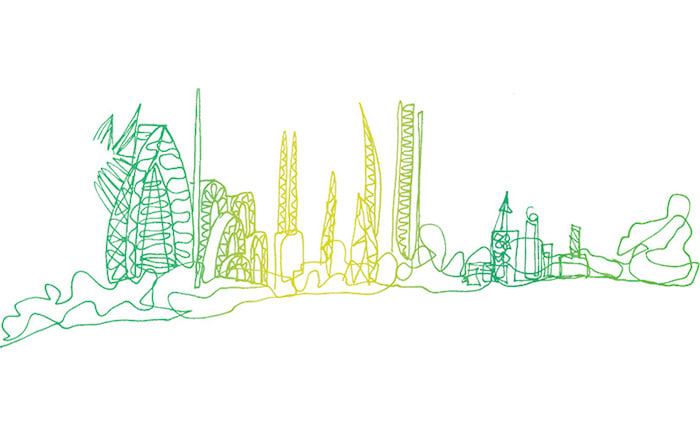Buildings of the future: science fiction or science fact?
What will the building of the future look like?
Engineering and infrastructure advisory company Aurecon has released a white paper on the topic, including what’s driving demand, challenges inherent in reaching ‘intelligent building’ status and what some of the next steps in this journey might be.
Titled 'Buildings of the Future: science fiction or science fact?', the white paper is based on interviews of industry professionals who were asked to imagine what Buildings of the Future might look like and how they might be created.
“The major drivers identified in the paper have the potential to reshape the built environment industry in the next 30 years,” said Peter Greaves, Aurecon’s Buildings of the Future Leader.
Author Arthur C Clark once said that sufficiently advanced technology is indistinguishable from magic. In a way — this captures the essence of what technology installed in Buildings of the Future should aim to achieve. The technology should ‘just work’ without the user understanding how.
It says that 3D printing technology will have a huge impact on the design engineering industry.
“The 3D printer is significantly disrupting the traditional design role held by the structural engineer but, at the same time, presents exciting new opportunities in how building designers will create, relocate and shape Buildings of the Future,” said Greaves.
A ‘one-size-fits-all’ approach to Buildings of the Future is becoming less palatable nowadays while new, flexible construction materials, including composite materials, additive manufacturing concrete, solar polymers and carbon fibre balsa, is fuelling new design approaches.
“These options are unlocking the architectural limitations of size, weight and shape that the building and construction industry works within today,” he said. “To bring this to life, the thought processes, measurements and methods commonly used in our industry will also have to evolve.”
It said another innovation in the building management field was developing shared services in facilities management within a precinct.
Greaves said innovators would work on the idea of shared building maintenance hubs, which would be designed to provide facilities for all local buildings to centrally monitor electricity, water, energy storage common areas and integrate other aspects of maintenance and management of operational efficiencies.
The Western Sydney Airport and Greater Sydney’s development could become a prime example of an opportunity to implement this, says the paper.
It highlighted the ‘whole of precinct’ approach to the management of facilities and wider infrastructure assets and stressed the 2017-2018 Federal Budget’s commitment to several large infrastructure projects in the area, including high-speed rail to Western Sydney.
“If we’re going to help design Buildings of the Future, we have to be able to envision them,” said James Bennett, Aurecon’s managing director, Built Environment. “Aurecon wants to be a forerunner in helping our clients identify the opportunities this presents and facilitating these changes.”
“Those who shape Buildings of the Future will be those who, firstly, realise that our world is changing and have the boldness to not only let go of, but question, the status quo so that working with government and economic leaders, we might reimagine our physical spaces and infrastructure. Engineers need to lead such conversations,” asserted Bennett.
